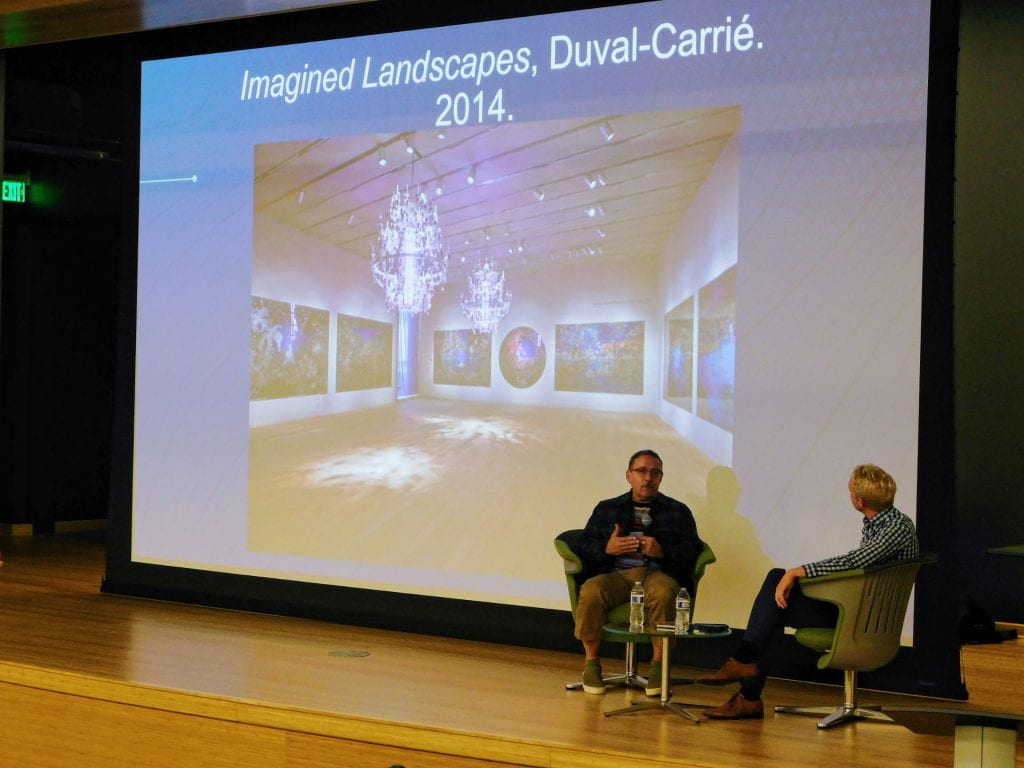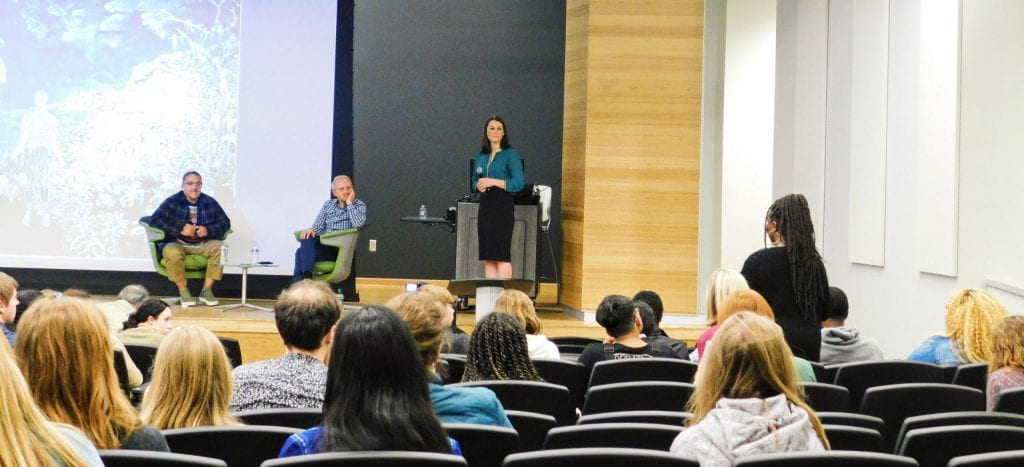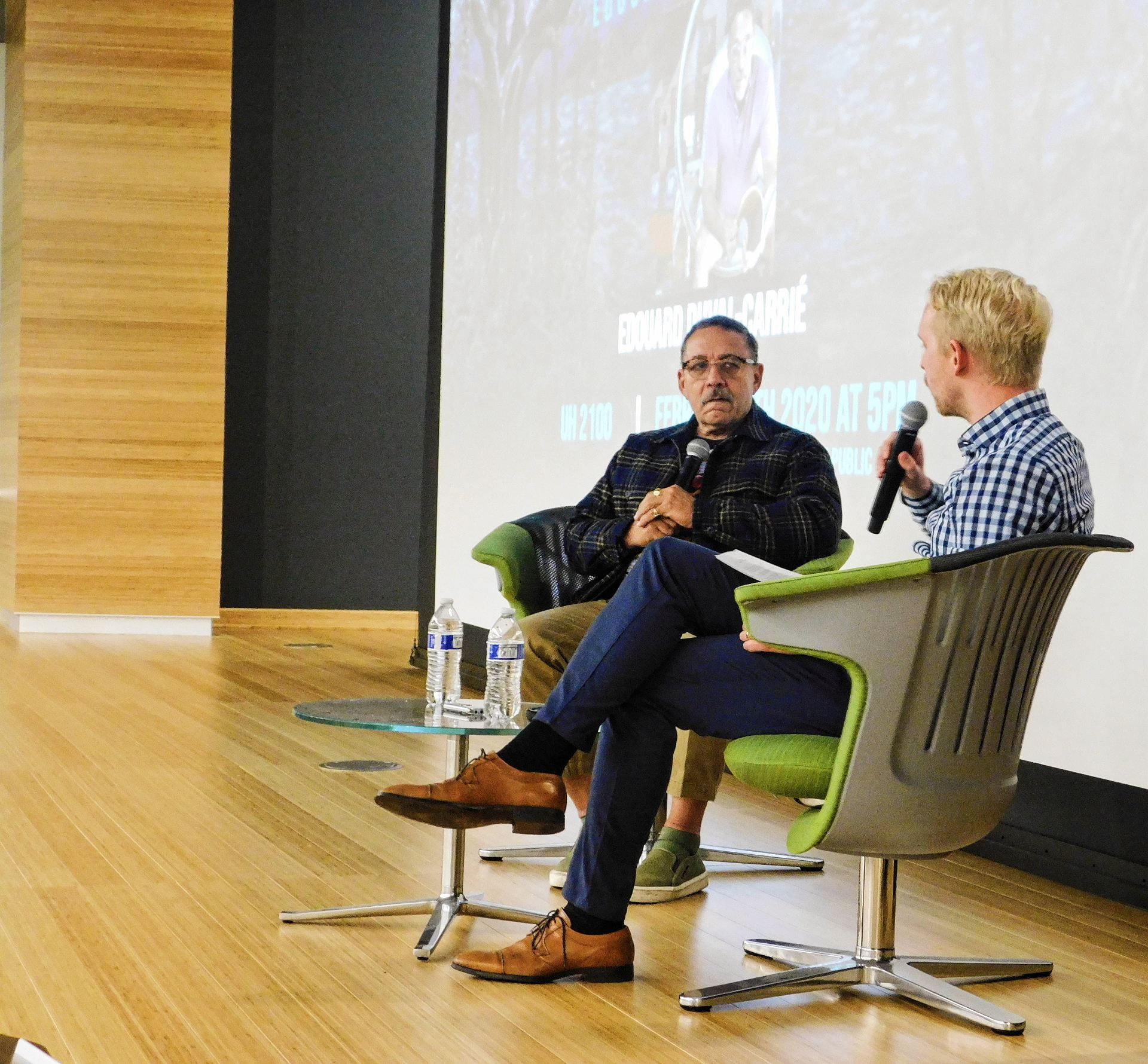On February 4th, 2020, the Institute for Human Rights, alongside the African American Studies Program, the Department of Art and Art History, the Department of Foreign Languages and Literatures, and the Department of History hosted a discussion with artist Edouard Duval-Carrié. The event was moderated by Dr. Charly Verstraet of the Department of Foreign Languages and Literatures at UAB. Duval-Carrié and Dr. Verstraet discussed Duval-Carrié’s different works, a large overview of his work, as well as the width of the scope and the diversity of his works. Dr. Verstraet and Duval-Carrié specifically discussed Duval-Carrié’s Indigo Room and his collection of artworks entitled Imagined Landscapes before addressing questions from the audience.
The theme of the night was “Under the Surface,” which was described to have two meanings. The first is to delve into what is hidden and unseen in the world and the second is a representation of silence. These meanings carry over into Duval-Carrié’s work and in his life. Duval-Carrié is based in Miami but was born and raised in Haiti. Much of his work represents his Haitian culture and the relationship between the Caribbean and the United States.

The first piece of art presented was Indigo Room. This art installation is a room of blocks, created by local high school students, with a large feminine figure on the ceiling. Duval-Carrié described the piece to be a celebration of the bicentennial of Haiti’s independence as well as to signify the movement of Haitians from Miami to Fort Lauderdale, New York. He worked directly with high school students and asked each one to create a “memory window,” about Haiti. These “memory windows” were encased in resin and placed in the museum alcove. The installation is blue, to represent being underwater. Duval-Carrié stated that he wanted to make sure that as Haitian people arrive to different cities in the United States, the Haitian culture arrives with them as well The figure on the ceiling is the ultimate mother in Haitian culture, representing both the cosmos and water. He described the installation as a mix of the past, religion, and politics. Duval-Carrié also said that in 2014, he and the students who he worked with to create the installation reunited. He described being so impressed at how many of them continued with the arts into their adult lives.
The second discussion point was the collection of artworks entitled Imagined Landscapes. These pieces are re-imagined from the artworks of the Hudson River School, depicting an idealized Caribbean. Duval-Carrié described the Hudson River School paintings as alluring and romantic. While the paintings were beautiful, they forgot to incorporate the humans living on the islands and the suffering they endured. Duval-Carrié’s re-imagining took select Hudson River School paintings and upended them, making the scenery large and mysterious. Most importantly, he adds the culture of the Caribbean and the heartbreak of United States imperialism back into the landscapes.
Duval-Carrié has taken his talent and passion for art to inspire important conversations around the world. He encourages Haitians to be proud of their heritage and their country. He encourages Americans to recognize the way imperialism reshaped entire countries and how those countries are still reeling from its effects. It is important to acknowledge the powerful effects of art in reclaiming culture and sparking conversations and it is vital that we keep those conversations flowing.

If you are interested in learning more about Mr. Edouard Duval-Carrié, you can look at his webpage where a listing of his current exhibitions can also be found.

